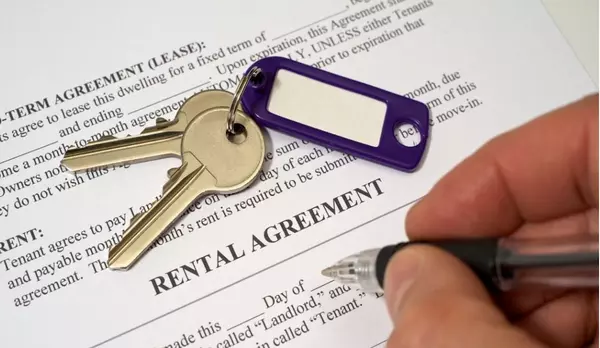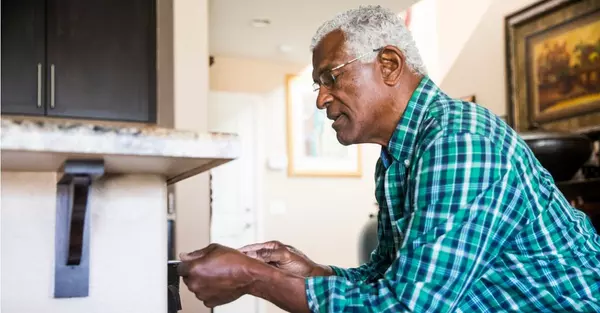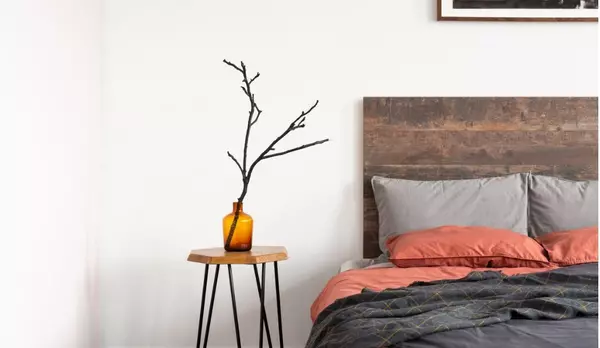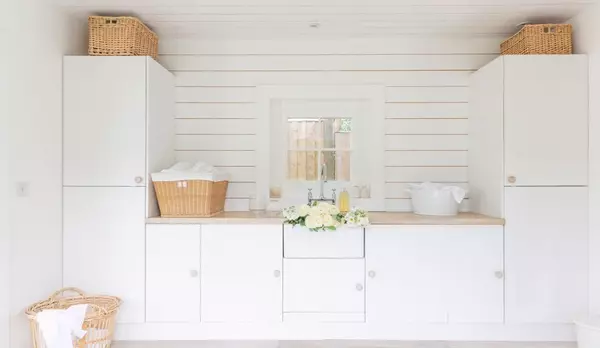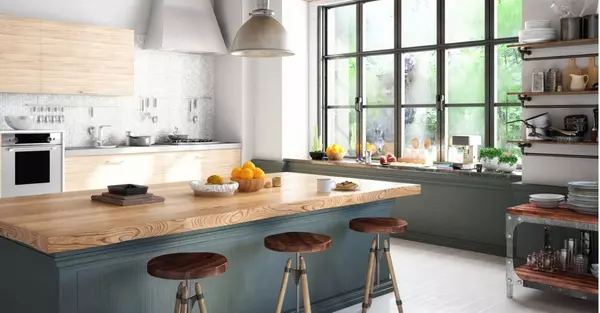
Easy Kitchen Cabinet Upgrades
Outdated kitchens are such a turnoff, particularly since we tend to spend so much of our time in this one area of the home. It’s not always in the budget, or the schedule, to plan a major kitchen overhaul, but luckily there are some easy fixes that can hold you over until your next reno. Here are five easy ways to upgrade your kitchen cabinets without replacing them. They’re simple and inexpensive, yet still manage to pack a punch. Go for open shelving. Open shelving is a trendy look right now, allowing you to display everything from plants to your favourite cookbooks to carefully curated dishes. For a quick update, take the doors right off your current kitchen cabinets and enjoy some open shelving. Don’t want to commit? For a subtle accent, try taking the doors off a single cupboard instead. Paint and wallpaper are your friends. A fresh coat of paint in a neutral colour can be a great way to update dated cabinets. For a stylish look, keep the upper cabinets light in colour while painting the bottom ones in a rich or bold colour. You can even apply wallpaper onto the surface for a striking accent. Fake custom with crown molding. Adding crown molding to the tops of your cabinetry is a great way to make them look elegant and custom-made. Install lighting. Sometimes all you need to brighten up your kitchen is some lighting. Consider installing under-cabinet lighting, which is not only practical, but adds a nice glow. As a bonus, strip lighting is super easy to install. Swap out your hardware. Removing and installing new hardware is one of the easiest ways to breathe new life into cabinets. Go for something sleek and modern, or dress things up with luxe marble or brass handles. Giving your kitchen new life doesn’t have to break the bank or cause a major construction headache. Any one of these can up your kitchen game in just a few hours or less.

DIY Staging Tips for Sellers
Staging is a pretty big part of selling a home. Buyers are visual, so a space that’s been thoughtfully staged has a much higher chance of being sold faster, and for a higher asking price. Many real estate agencies have in-house stagers, or work with a reputable company they can recommend to you. But if you want to get a head start, there are plenty of DIY tricks you can handle yourself to get ready for showings or an open house. Curb AppealThe first thing people will see is the outside of your house. Just like in a business meeting, first impressions are everything, so a little bit of detail goes a long way. Make sure your front lawn is freshly cut, and that your pavement is clean and swept. Consider giving your trim and front door a fresh coat of paint and adding a potted plant to your stoop. Air QualityA stuffy home is an immediate turnoff for buyers, no matter how stunning your décor is. To avoid this, keep your windows open to let air flow through. If you happen to be selling your home during the great Canadian winter, consider keeping your windows open for a short period before the viewing. Some fresh flowers or a subtle scented candle can also be a great way to elevate your home’s mood, but be sure not to overwhelm with artificial perfume, lest people think you’re covering something up. Neutral ShowingsBuyers are more likely to get emotionally attached to a home when they can see themselves living there and implementing their own style in the space. Essentially, you want your house to seem like a showroom, not your home. This means tucking away personal photos and effects, trophies, handmade art or anything else that is uniquely you. Give your potential buyers a chance to visualize themselves and their own things there. Focal PointA quick trick for staging and making the most of your space is to have a focal point in each room. This could be a fireplace or a bay window in your living room, or a striking headboard in the bedroom. Arrange your furniture to compliment the focal point, not compete with it. Staging is an important part of prepping your home for a sale, but it doesn’t have to be complicated. Small touches like this are a great way to get started, whether you hire a professional to help or not.

How to Plan a Successful Renovation
Taking on a home renovation project can be terribly overwhelming, even for seasoned veterans. With HGTV shows, family blogs and curated Instagram feeds creating the illusion that it will be a fun bonding experience with your spouse, it’s no wonder that so many are buying fixer-uppers. It’s a commendable choice to renovate an old home, but you’ll need to have a good plan on paper before you ever touch a single tool. Do your homework. Don’t go in blind. Before you hire a contractor, it’s important to conduct as much research as you can—and not just by Googling or swooning over Pinterest boards. Find out what your local contractors’ portfolios look like, ask them about their experience and call their references. Many design professionals play the smoke and mirrors game online to sway potential clients, but a positive, long-standing reputation in your community speaks for itself. Establish a budget. Penny-pitching homeowners can boast about how much they saved during the renovation process by cutting costs wherever they could, but even the most experienced DIYers are likely to run into issues they didn’t expect. This is why most design professionals recommend that their clients figure out a realistic budget ahead of time. But be aware that almost every renovation ends up costing more than you want it to. Choose a dream team. Renovation and design projects often go hand in hand, and for that reason, plenty of husband-and-wife duos are starting construction and design businesses. If you can find your own local Chip and Joanna Gaines, you’re in luck. Otherwise, you’ll have to scout out a contractor and a designer separately, and figure out how well they work together to make your dream home a reality. If you’ve found a designer you’re excited about, you can also ask them if they have a contractor they prefer to work with. That can help ensure you have the strongest team possible in place. Figure out whether you need an architect’s help. Depending on the scale of your renovation project, you may need more than a contractor. Entire additions—for example, a sunroom, an extra bedroom or a screened-in porch—to your home are unlikely to be manageable by a team of construction workers alone. If you need to get in touch with an architect, figure out who in your area is available and capable of providing you with the best service possible.
Categories
Recent Posts


